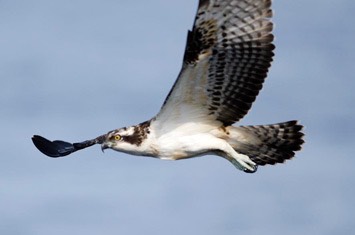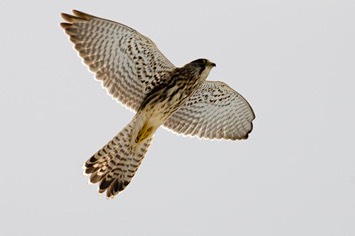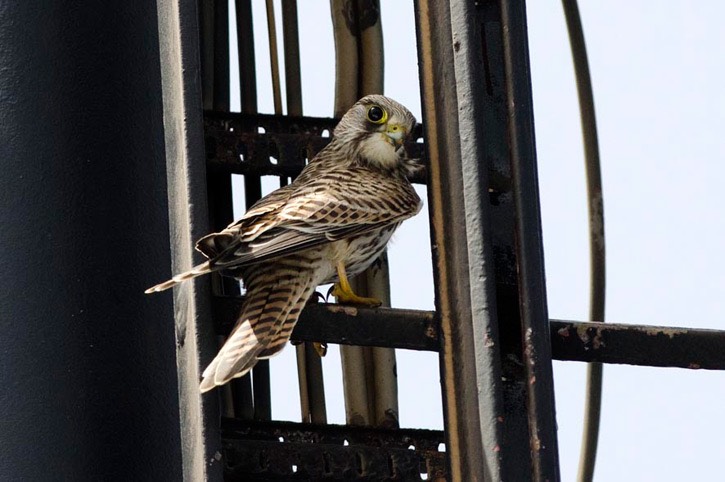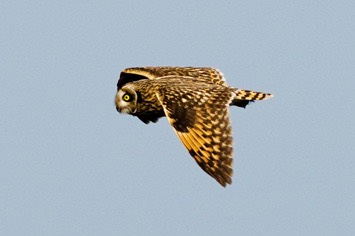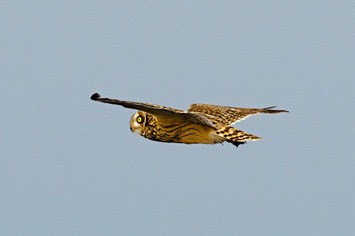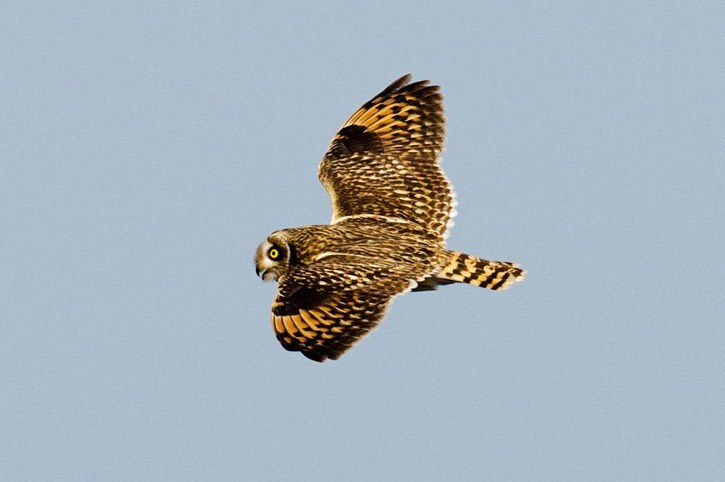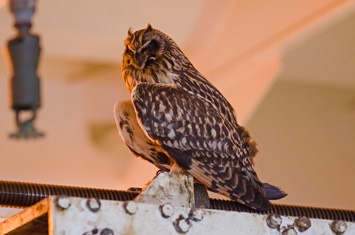Ever since our beach-combing trip down the coast of Western Sahara and Mauritania in 2003/2004, when we found countless whale and dolphin bones, we’ve been longing to explore the offshore environment of this obviously very productive region. Our chance came in September and October 2012, which coincided with the peak time of the bird migration and the beginning of the great whale migration season. A second opportunity arose in December 2012, when we returned to a location further north off the Banc d’Arguin National Park.
Both of the areas we went to included deep waters as well as the slope onto the continental shelf, and so offered a wonderful variety of marine life.
We’ve never seen so many short-finned pilot whales (Globicephala macrorhynchus) in such a short period of time! Hardly a day went by without seeing at least one group and often more and we had many close encounters; sometimes they even seemed to come and investigate our ship.
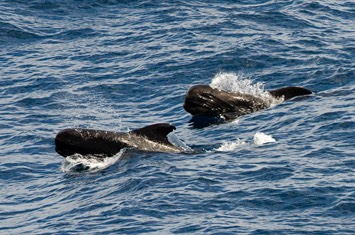

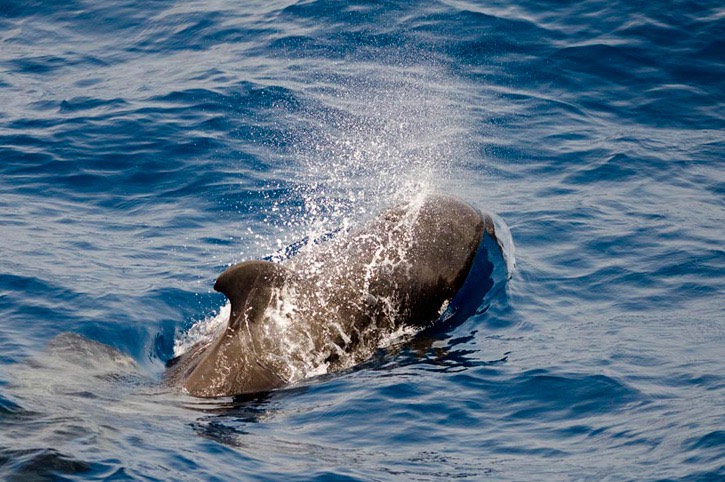
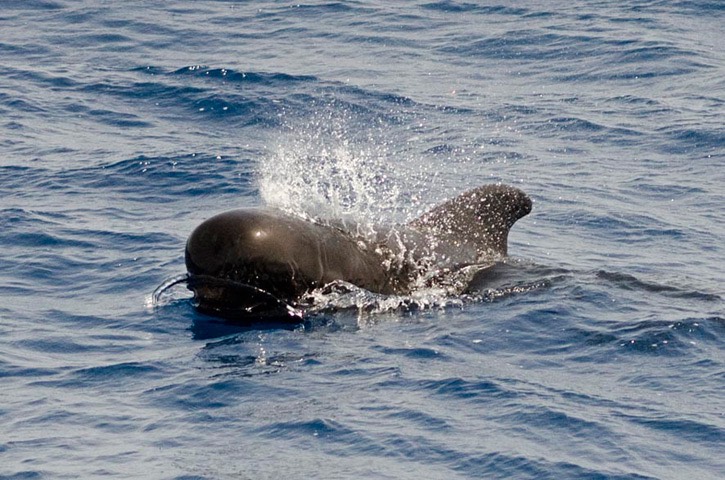
The strong family bonding in pilot whales was very obvious: big mature males with huge dorsal fins, adult females, juveniles and tiny calves swam together in large family pods.
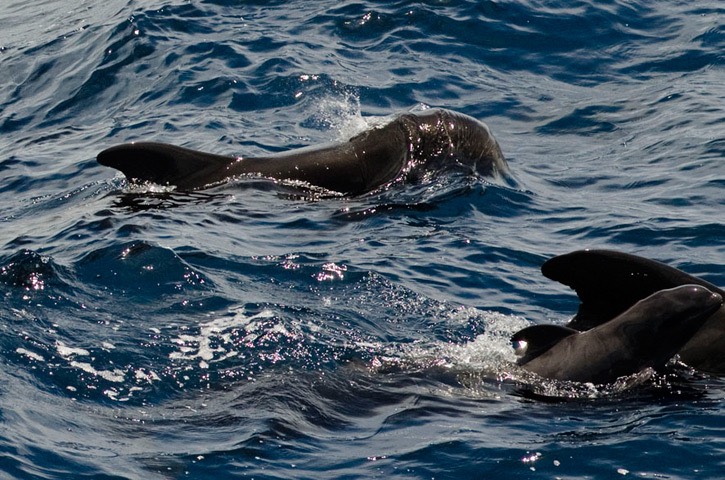
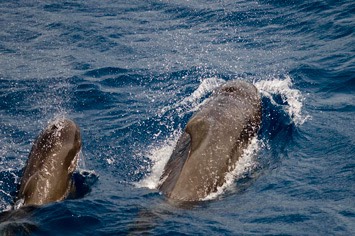
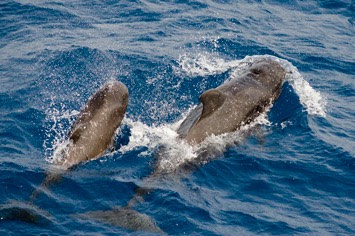
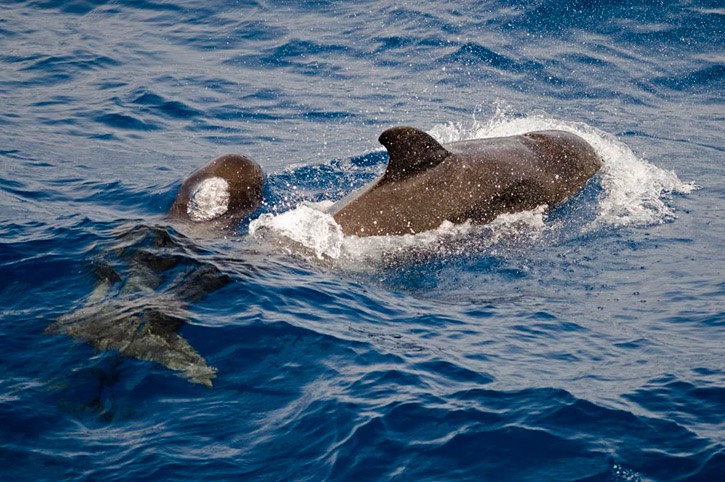
Although pilot whales look black from a distance, close up and in good light they appear chocolate brown with paler markings, giving some a caped effect or a shoulder blaze. Skin lesions gave some an additional mottled appearance.
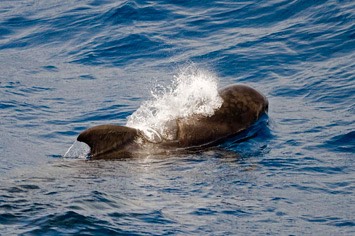
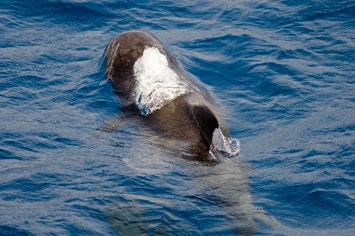

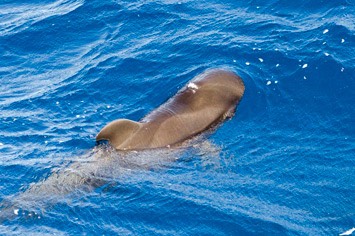
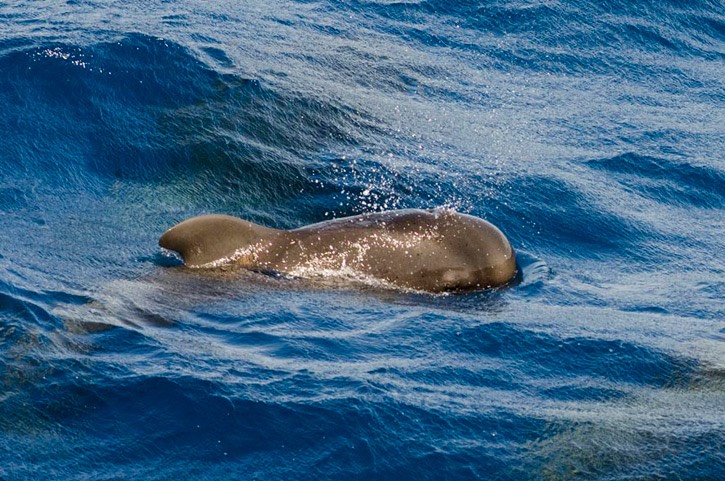
In a surprisingly high proportion of pilot whale sightings, bottlenose dolphins (Tursiops truncatus) turned up as well. This is a well-known association that we have seen before, although never so frequently. The benefit of this arrangement to either species remains a mystery.
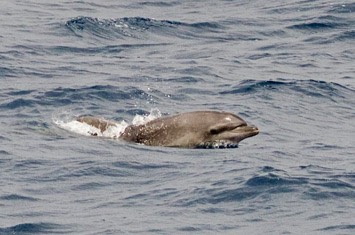

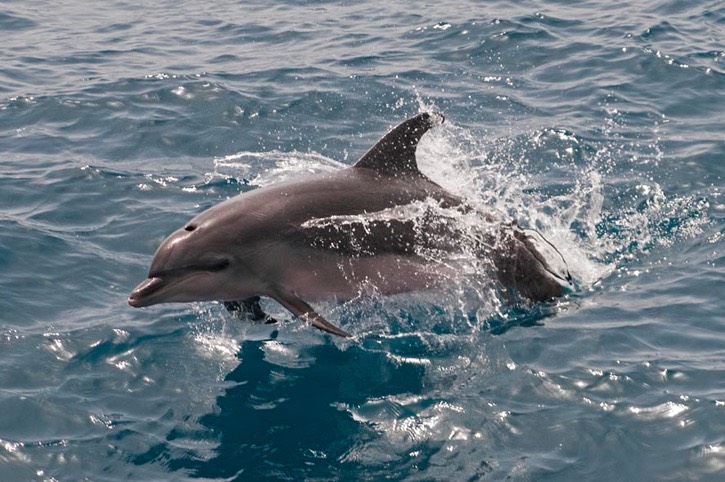
Some of the bottlenose dolphins that came to bow-ride the ship were burdened with enormous remoras. These were the biggest remoras we have ever seen and we felt rather sorry for the dolphins that had to lug them around.
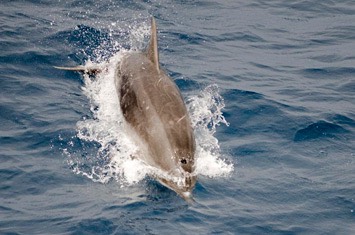
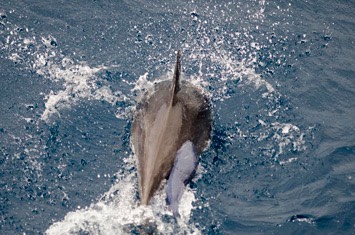
Atlantic spotted dolphins (Stenella frontalis) are fun dolphins that often travel in large groups and are not shy to come and ride in the bow wave of even our slow moving ship. Despite the name, they are born more or less plain grey and acquire spots with age. The elders appear streaked and spotted with white.

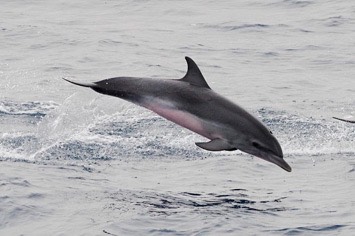


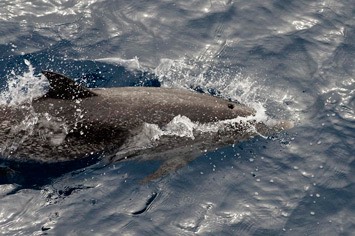
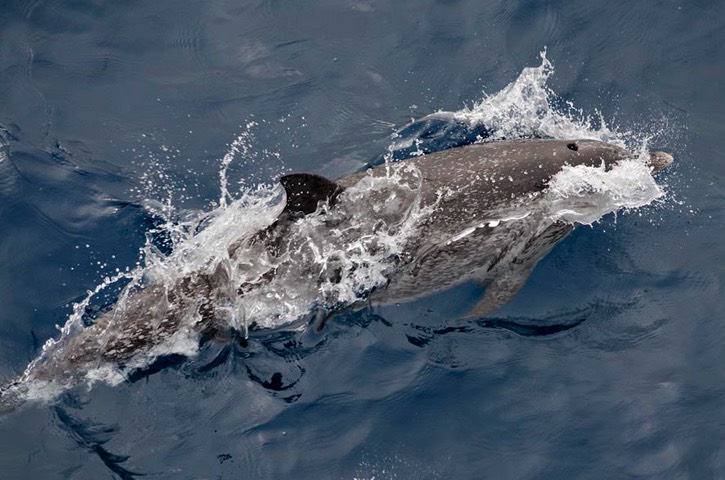
There is a horrible monster of the deep, called a cookiecutter shark (Isistius brasiliensis), which sneaks up on unsuspecting victims and takes deep, painful looking bites out of them! The wounds they leave are characteristically round and are a common sight on whales and dolphins in the tropics.
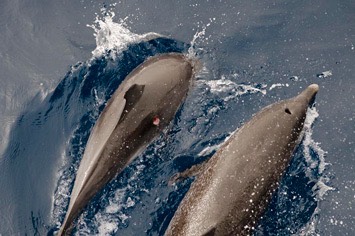
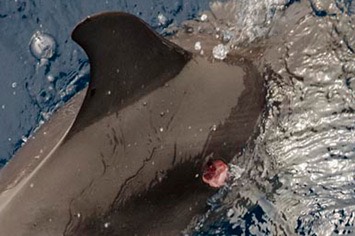
We’ve got to know the closely related pantropical spotted dolphins (Stenella attenuata) as a relatively standoffish species, so we were rather surprised to see some rushing towards the bow of the ship!
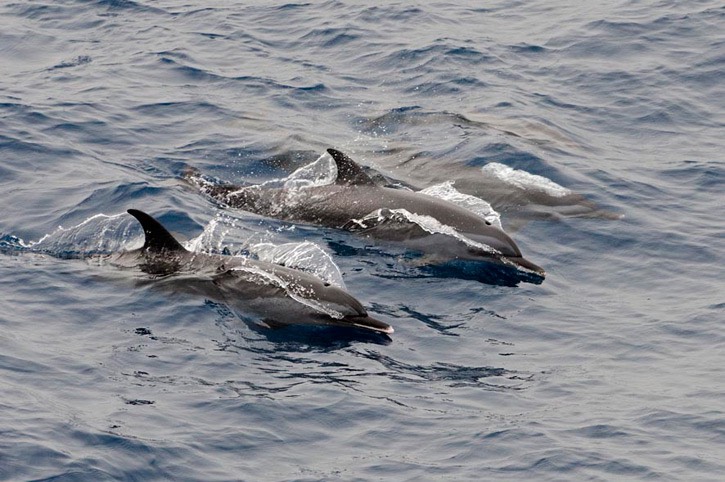
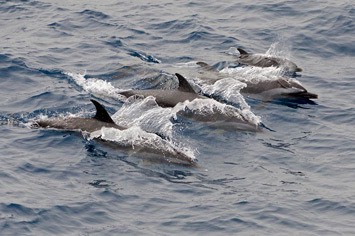
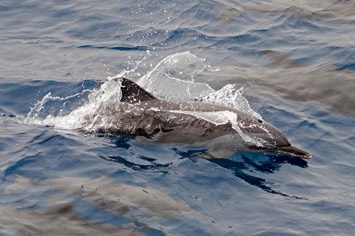
What was even more surprising was that they were in a mixed species group with Atlantic spotted dolphins – an association that doesn’t seem to have been reported before.
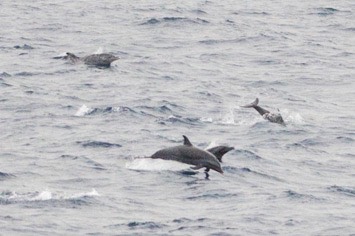
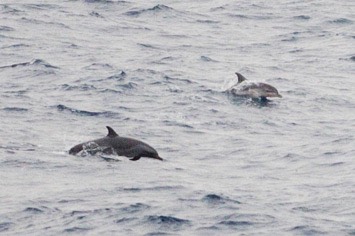
Our first sightings of spinner dolphins (Stenella longirostris) were all rather distant, although their characteristic spinning leaps and triangular dorsal fins made them easy to identify even at long ranges. However, at last some came really close, so we were able to get some decent photos. Their needle-like beaks look really fragile.
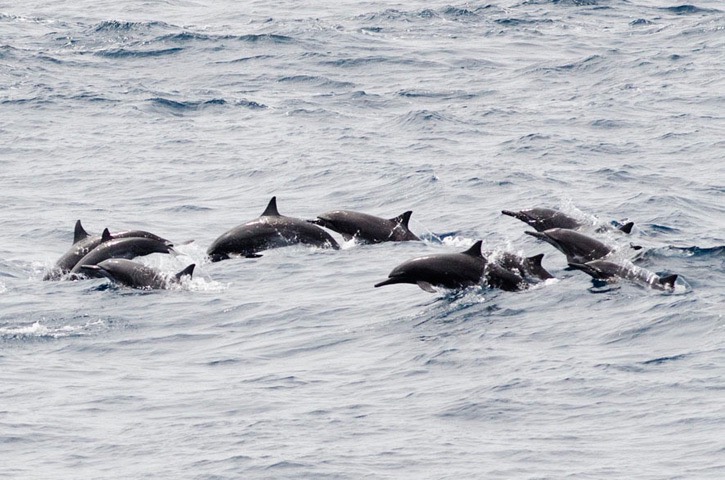

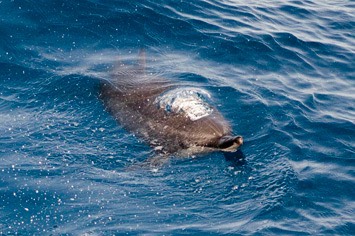
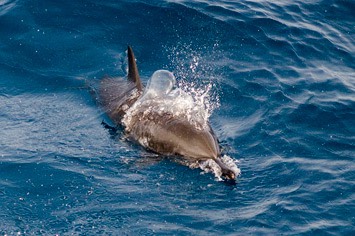
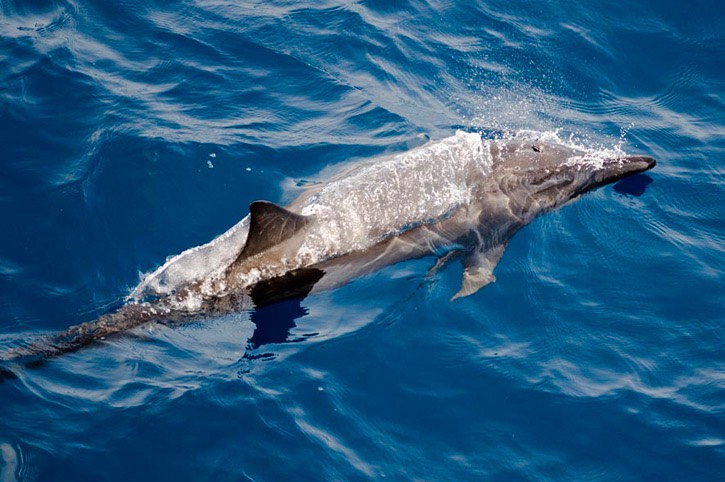
The only other dolphin species that occasionally spins is the Clymene dolphin (Stenella clymene), an unusual species confined to tropical Atlantic waters. Unfortunately, we are still waiting for the perfect photo opportunity with Clymene dolphins.
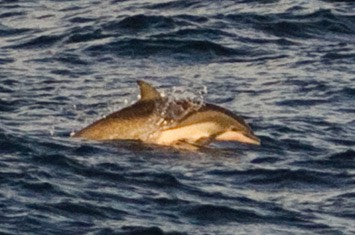
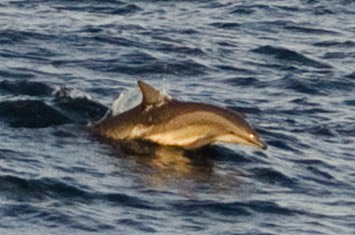
We were regularly visited in the late evenings and at night by large groups of common dolphins (Delphinus sp.) that appeared to be feeding on prey attracted by the ship’s lights.
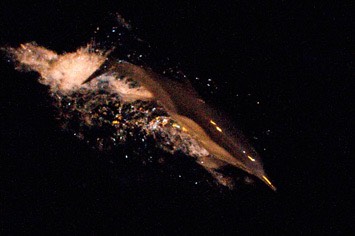
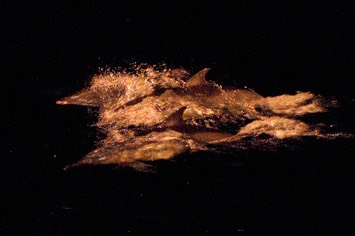
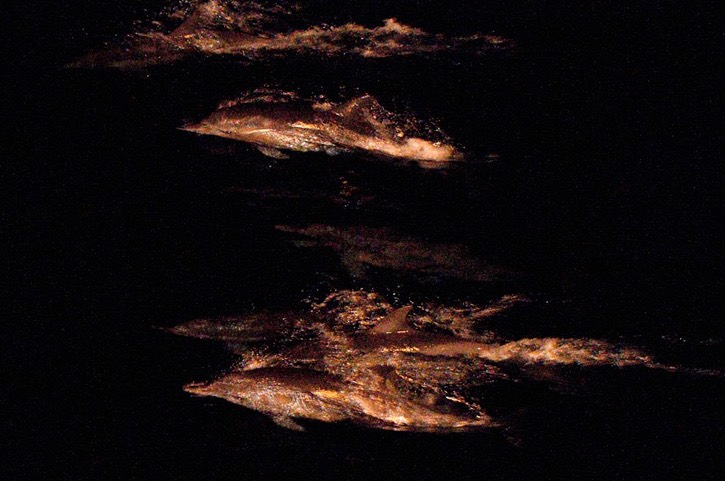
As well as watching for dolphins, we were also listening for them at night with towed hydrophones. The screen-grab from our acoustic monitoring equipment shows the profiles of whistles and click trains from echo-locating dolphins.
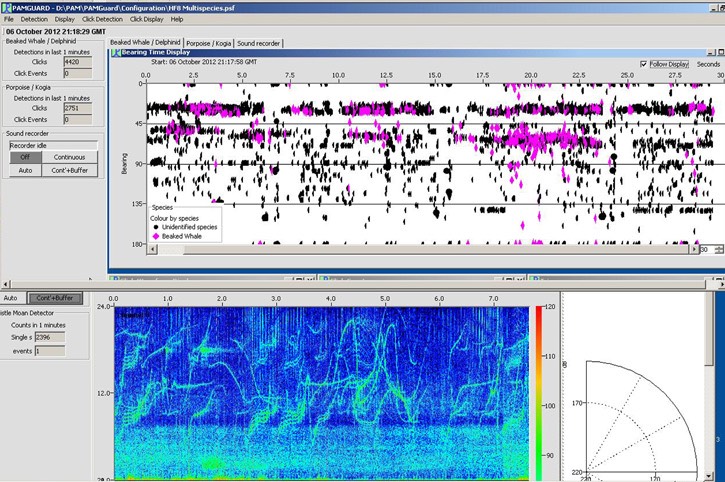
Some of the common dolphin groups we encountered were huge, often numbering several hundred animals, leaping and porpoising as they travelled in tight formation. Sometimes they came bow-riding the ship, when we could even hear them whistling without using any special equipment. There are actually two species of common dolphin – long-beaked (Delphinus capensis) and short-beaked (Delphinus delphis) – but they are hard to distinguish in the field. Some of our sightings were clearly short-beaked common dolphins, but some others had very muted colours, were rather dusky and could possibly have been the long-beaked species, although we couldn’t be sure.



Although the basic hourglass pattern is consistently present, there is a huge variation in the shading, stripes and subtle aspects of the pattern on individual common dolphins. Some have pronounced pale patches on their dorsal fins. Pale flippers predominated, but some had extensive dark and wavy lines on them.
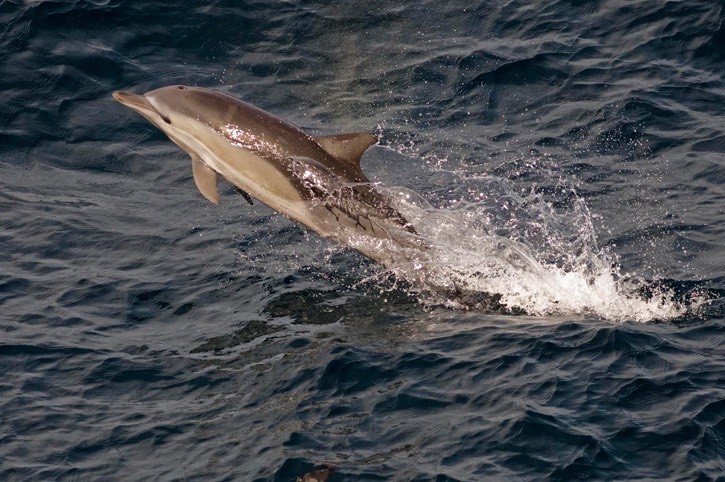


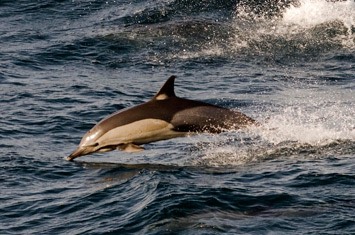
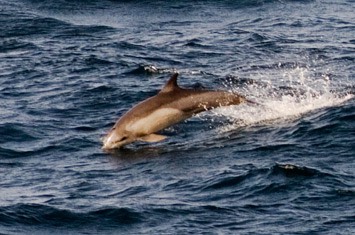
We saw striped dolphins (Stenella coeruleoalba) only on a few occasions, some of which we discovered hidden amongst common dolphins when we examined our photos in the evenings.
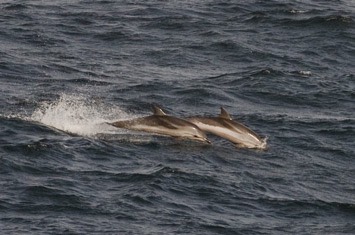

Rough-toothed dolphins put in an appearance only once, doing their usual synchro-swimming performance, as they dashed past the ship.
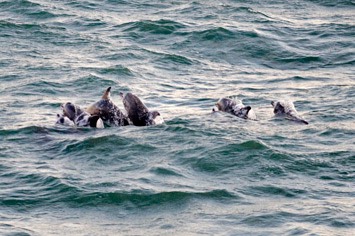
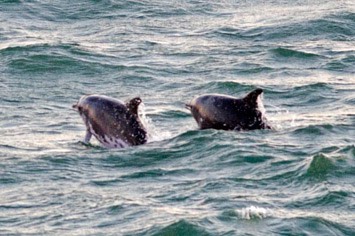
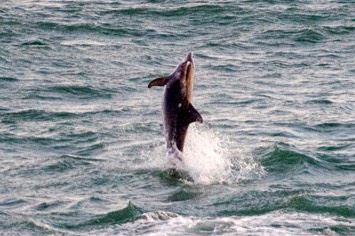
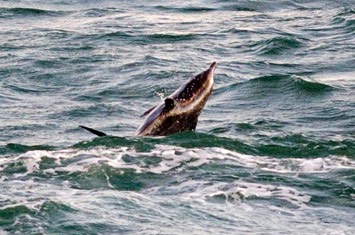
Like many dolphin species, Risso’s dolphins (Grampus griseus) feed mainly at night, so, when we see them in the day, they tend not to be very active. However, they do occasionally breach and on one occasion we had a remarkable view of a blotchy pink belly.
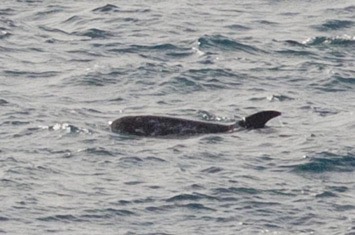
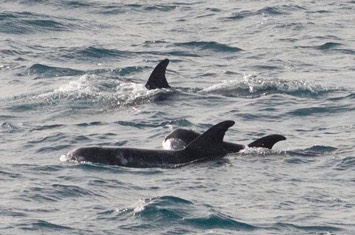
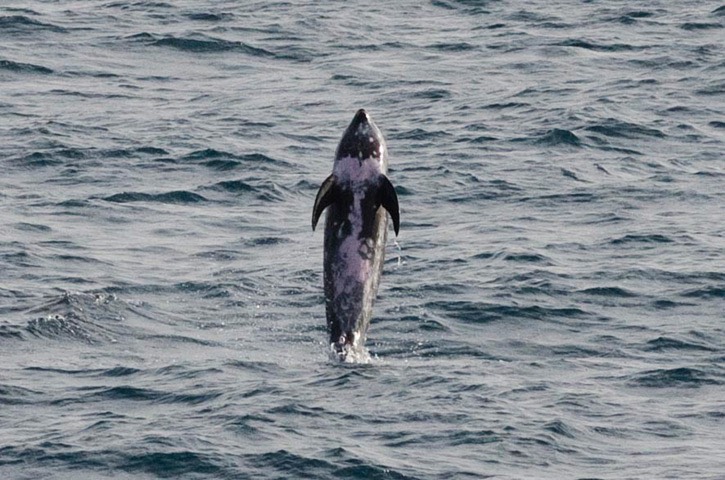
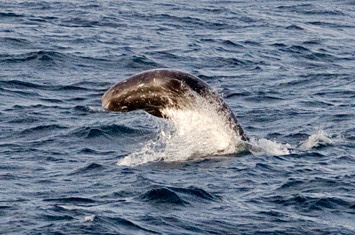
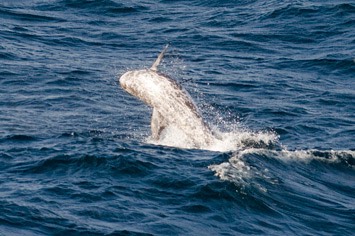
During the first few weeks we saw no big whales, but suddenly in October they arrived. A huge splash heralded the appearance of a humpback whale (Megaptera novaeangliae), repeatedly tail-slapping the water with its huge flukes.
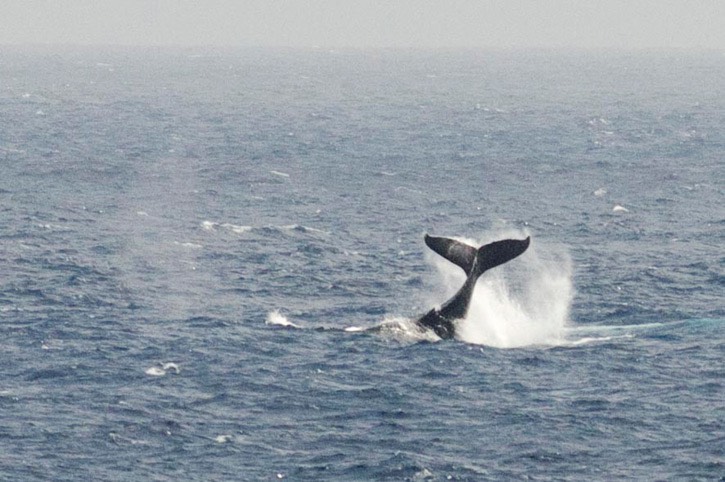
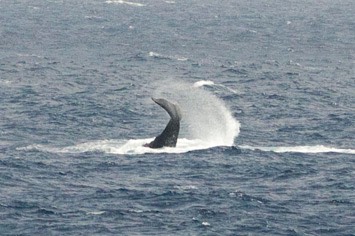
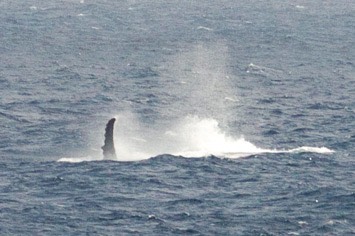
Bryde’s whales (Balaenoptera edeni) and sei whales (Balaenoptera borealis) are very similar and difficult to distinguish without a very close view of the head. At the time, we thought that this whale, which came fairly close to the vessel, was probably a Bryde’s whale.
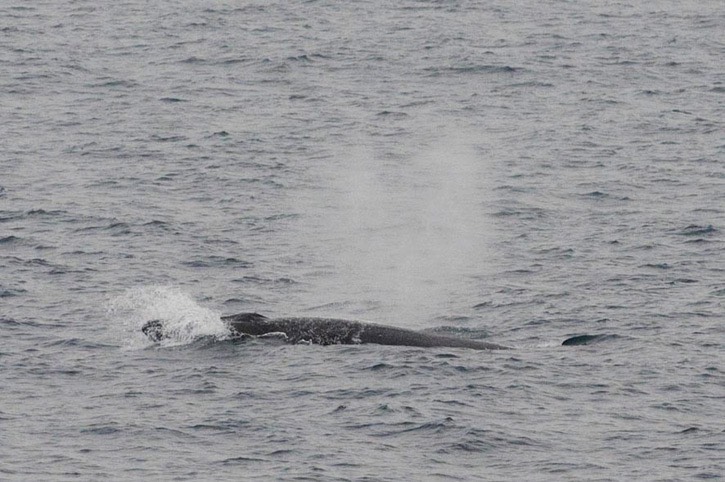
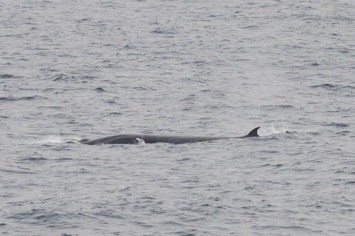
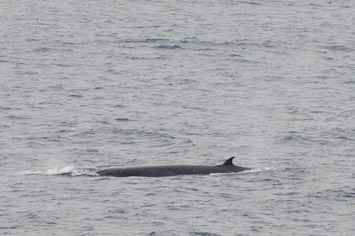
In the winter months sightings were dominated by baleen whales. Identification was always challenging, as most whales were of medium size and their blows were highly variable. Even those that surfaced close to the ship generally didn’t show their heads well enough, leaving us frustrated.
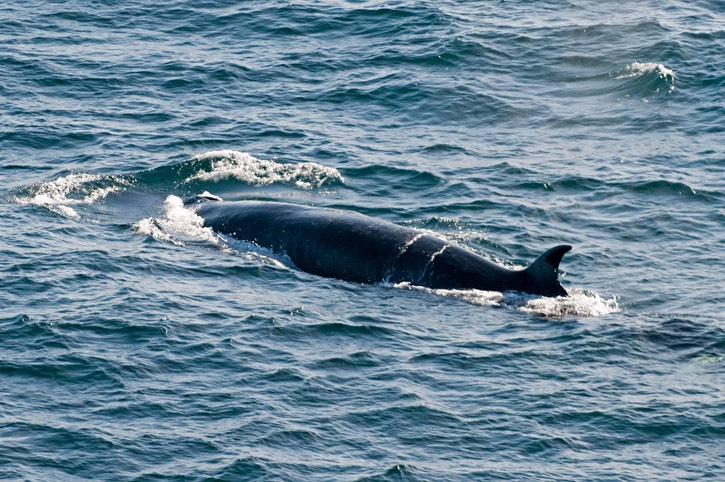
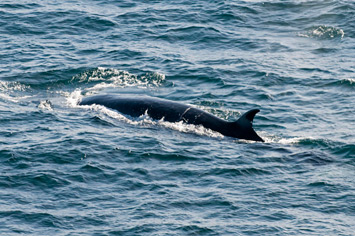
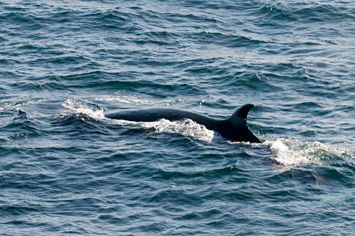
Whales that found themselves close to the ship often seemed to enter a “stealth” mode, exhaling under water and sometimes only their blowhole breaking the surface to inhale, so that their bodies remained concealed under the waves and there was little visible blow. Fortunately, some were bolder and we managed to get some images of their long backs and tall, falcate dorsal fins. We were constantly astonished at the ability of such large animals to hide in the open sea and become invisible when they chose to do so.
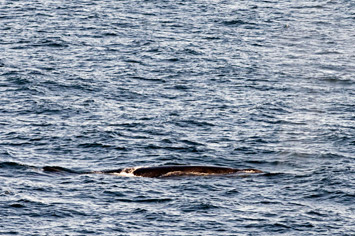

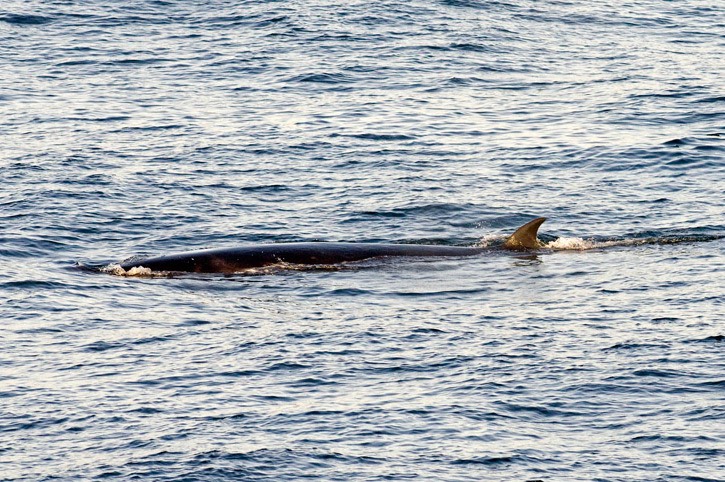
On several occasions at dawn and dusk we watched whales skim-feeding. They swam slowly along the surface with their mouths wide open, filtering tiny crustaceans with their baleen plates. The tops of their heads were held clear of the water, allowing us good views of their smooth rostra, which were slightly down-curved at the tip, identifying them as sei whales. On one remarkable evening, we were surrounded by around a dozen skim-feeding sei whales, one of which came to within a few metres. The sun had long set and it was too dark for photography. We stayed on deck until we could no longer even see them, but we could still hear their blows all around us.

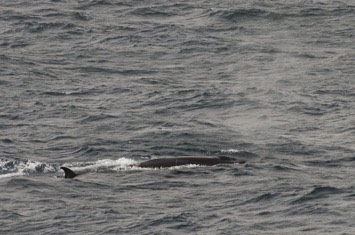
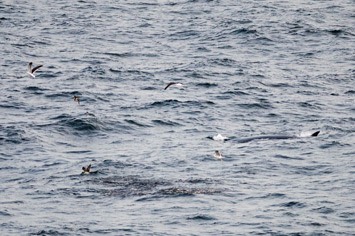
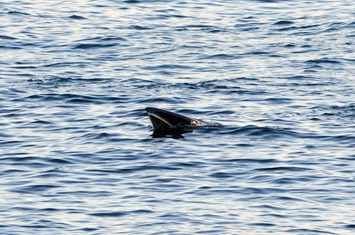
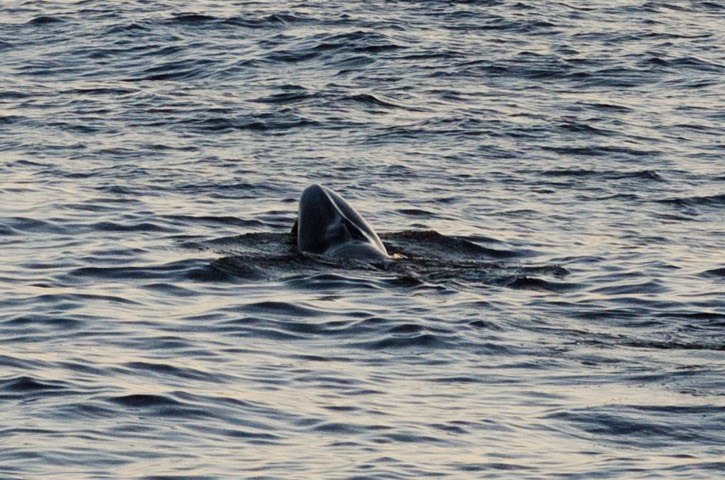
Sometimes, even with a good photograph, it’s difficult to distinguish Bryde’s and sei whales. We had a close encounter with a mother and juvenile whale in perfect conditions. At first we only saw the adult, which had a fresh cookiecutter shark wound on her back and overall appeared quite blotchy. When she next surfaced, a young whale appeared by her side and we actually managed to photograph its head as it broke the surface. The young whale had what appeared to a faint lateral ridge on its rostrum, suggesting it was a Bryde’s whale. However, the rostrum appears to be somewhat curved, leaving us as puzzled as ever about its identification.
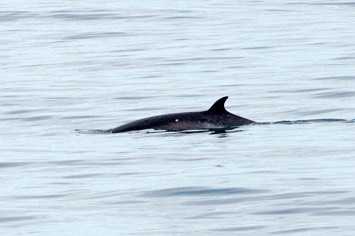
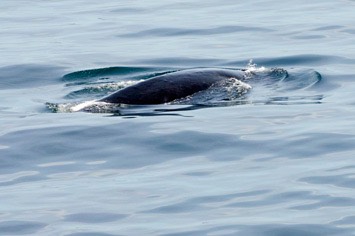
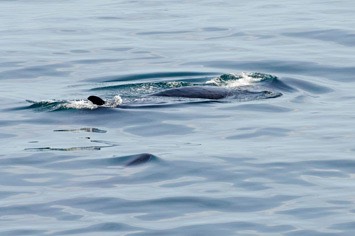
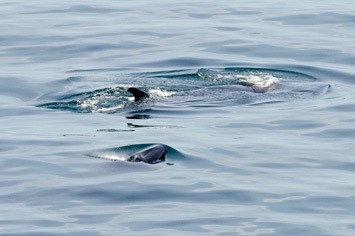
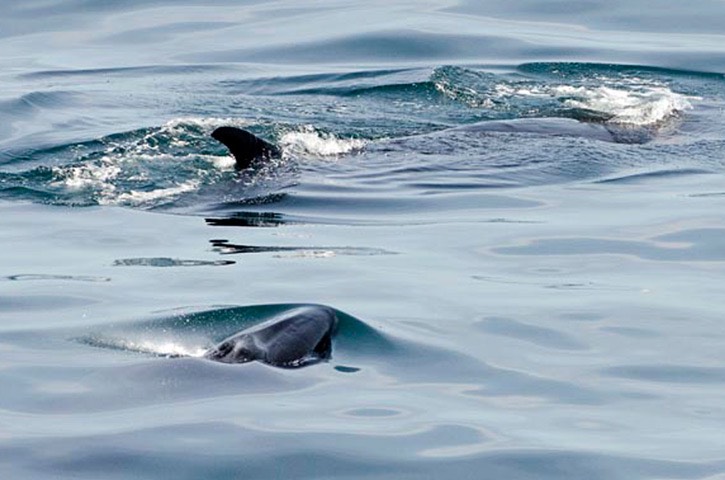
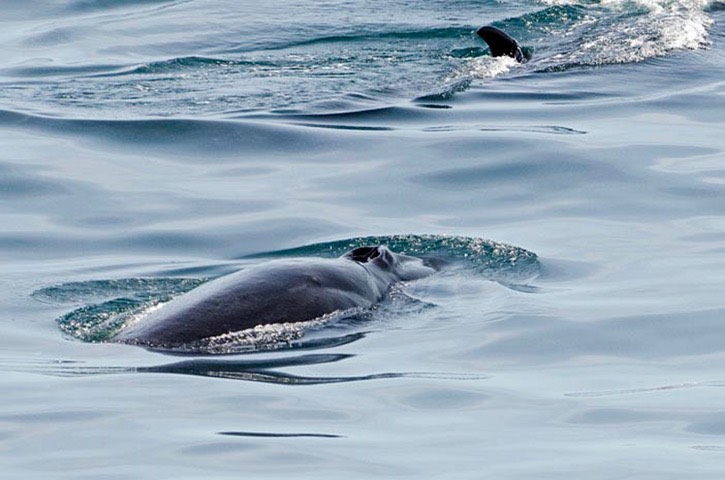
A series of huge blows in the distance got us excited and, as the encounter developed, we realised that we were looking at something spectacularly large. Each surfacing event seemed to take an age, as the whale’s huge back rolled across the surface. We had to wait to look at our photographs showing the enormous head, proportionally tiny dorsal fin and blotched appearance before we could confirm our very first encounter with two blue whales (Balaenoptera musculus)!
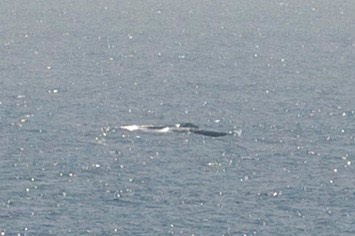
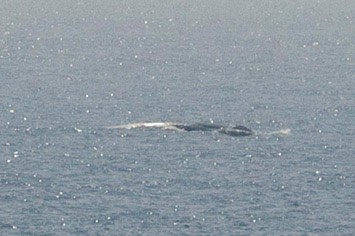
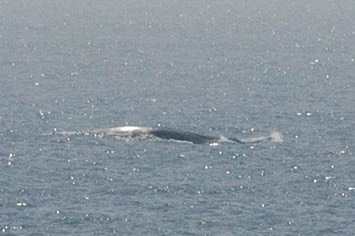
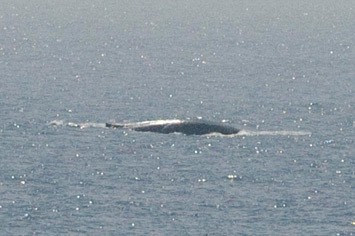
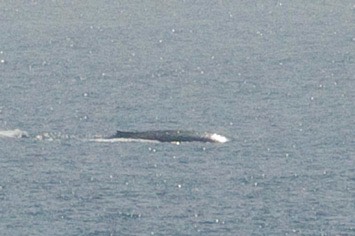
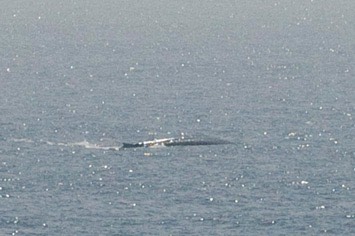
We were lucky enough to have several more encounters with blue whales. Surprisingly for such a huge animal, they did not always show much at the surface, and there were a number of very big blows we saw in the middle distance that could well have been blue whales too.
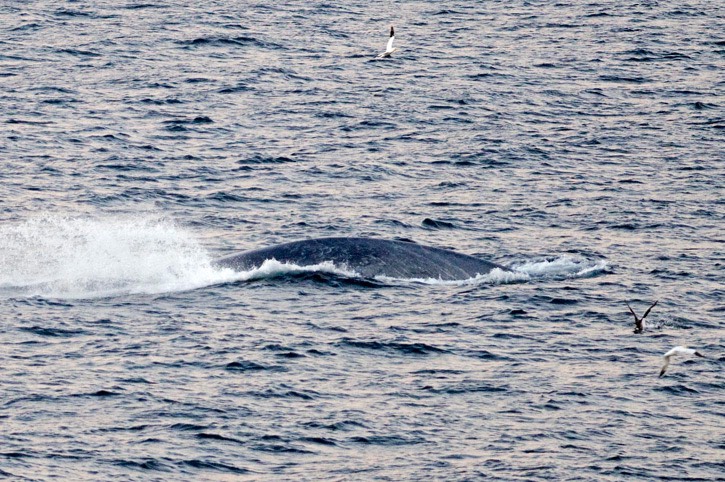

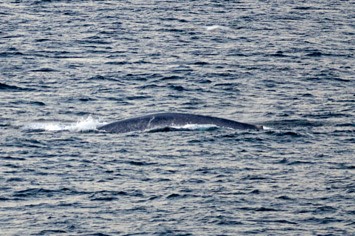
Incredibly, on one occasion a blue whale sneaked up on us while we were engrossed in trying to photograph a smaller whale, possibly a sei whale. Our attention was focussed on the starboard side, when suddenly a huge blue whale surfaced quite close and heading away. It must have come from the port side and swum under the ship! Well, that’s our excuse anyway – it’s a bit embarrassing to admit the largest animal on the planet managed to come within a few hundred metres before we even saw it…
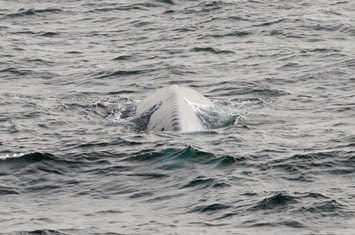

Sperm whales (Physeter macrocephalus) differ from all the other great whales, in that they have real teeth and not baleen. We saw quite a few on our second trip, all along the edge of the continental shelf.
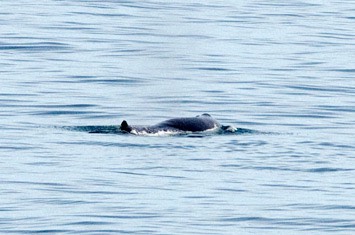
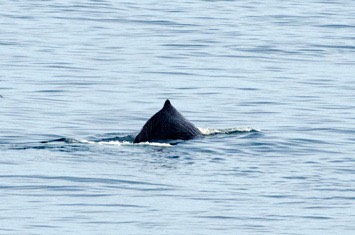
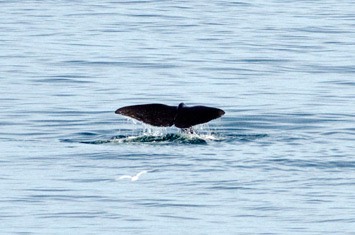

Mauritania lies close to the southern limit of the range of the harbour porpoise (Phocoena phocoena) in the Atlantic. We were therefore very pleased to have two sightings of this smallest of species, which is so much under threat from entanglement in fishing nets.
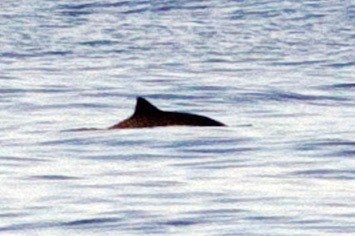
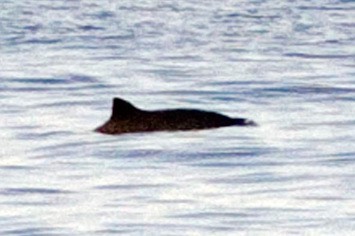
Unfortunately, we came across a dead porpoise too, which seemed to have nicks in its flipper consistent with the possibility that it had been caught in a fishing net. Much more gruesome was the sight of a large dead whale with a massive traumatic injury. We felt it may have been the victim of a ship strike accident, as the area where we saw the majority of baleen whales coincided with a busy shipping lane.
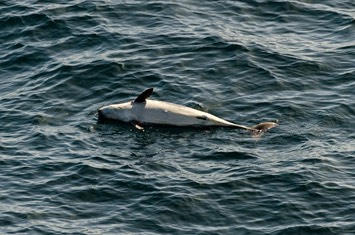
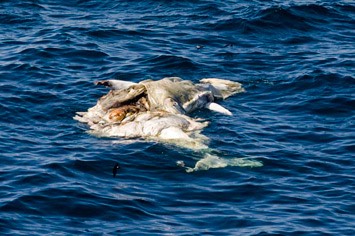
There were a couple of species that we didn’t get any decent photos of: two small groups of killer whales (Orcinus orca) and a distant unidentified beaked whale. So in total we saw an impressive seventeen cetacean species during our two trips! Sharks, rays, billfish and tuna were also abundant.
As we were outside the turtle breeding season, we didn’t see very many and only managed to get reasonable photos of one, which we identified as a loggerhead turtle.
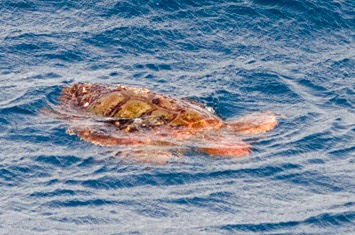
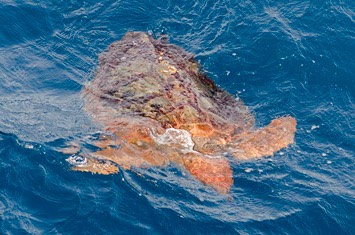
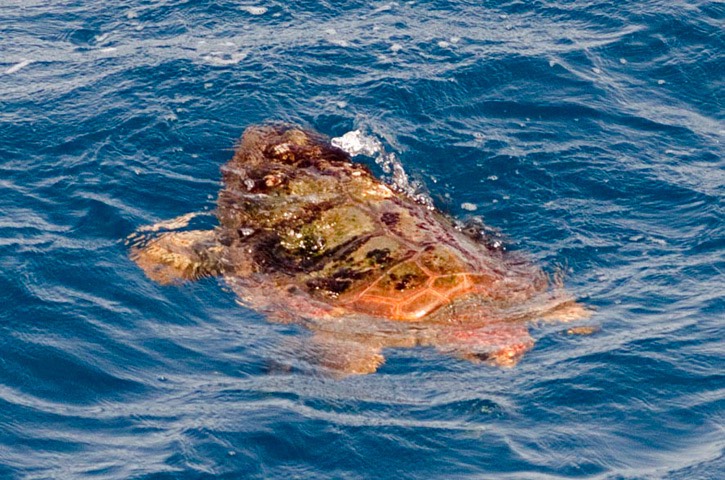
Seabirds were abundant. Cory’s shearwaters were ubiquitous and sometimes gathered in large, dense flocks of 150 or more. Sabine’s gulls, a species that breeds in Arctic Canada and Greenland, but spends its winters off southwest Africa, were surprisingly numerous. Their three-tone black, white and grey pattern is very distinctive.

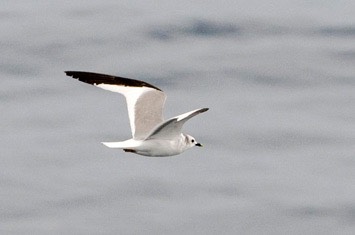
We saw several tern species, including black, common or Arctic, Sandwich, lesser-crested, royal and Caspian terns. Curiously, terns never settle on the sea, but will stand on almost any floating object, dead or alive. Lesser black-backed gulls followed fishing boats in enormous flocks of several thousand birds for each boat.
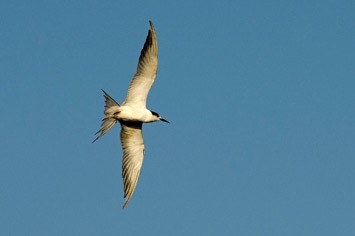

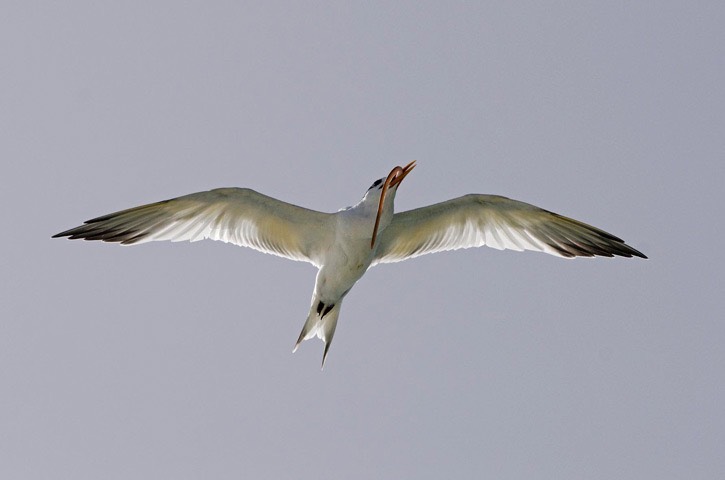
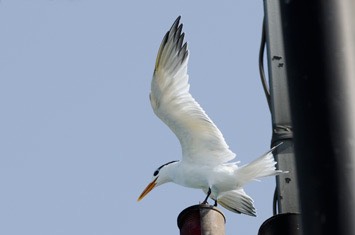

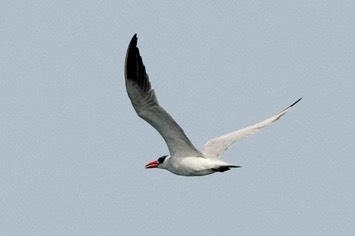
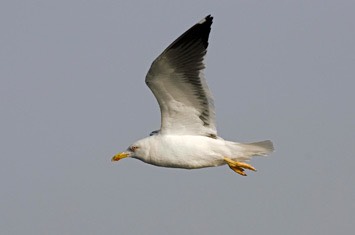
Skuas frequently harassed the terns and other seabirds; we saw all four northern skua species, but pomarine skuas were by far the most abundant. Some of the them had beautiful well-formed spoons, although most looked rather tatty or were juveniles yet to grow these curious tail feathers.
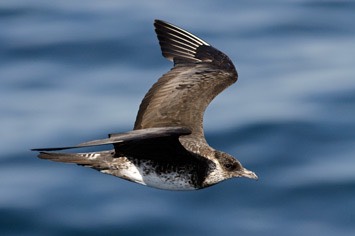

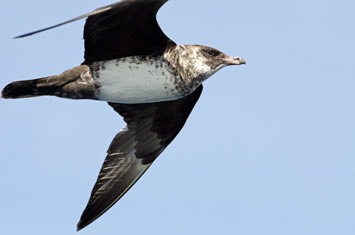

In late autumn many gannets appeared. Among them were many of this year’s speckled brown young, making their first foray to their winter quarters. Gannets take around five years for their plumage to acquire the clear black and white markings of an adult. It was heartening to see all the intermediate plumages of immature gannets, indicating successful breeding around the UK and Scandinavia in recent years.

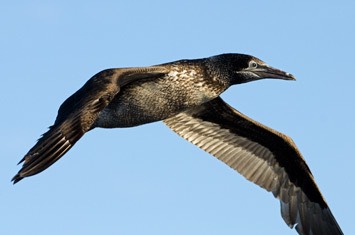
The new generation: this year's young birds
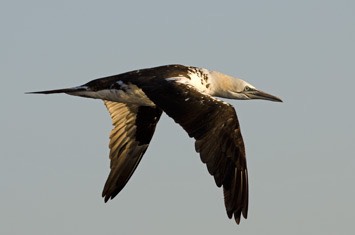
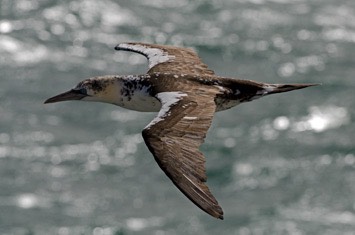
Second year birds

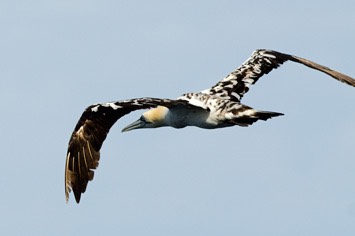
Third year birds

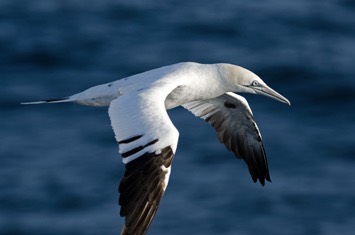
Forth year birds
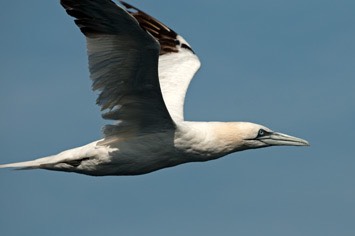

Adults
Massive numbers of gannets gathered over the continental shelf waters off Mauritania in the winter. Dozens would follow our ship in the mistaken belief that it was a fishing boat.
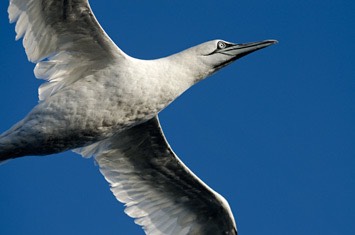
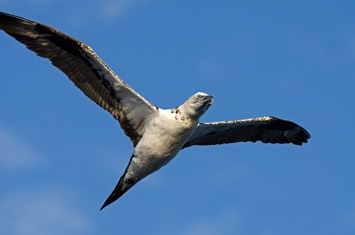
At times we witnessed feeding frenzies in which thousands of gannets plunged into shoals of fish.



Unfortunately we saw quite a few gannets that had ropes, nets and fishing line trailing from their beaks or bodies.

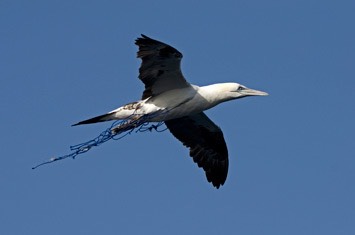
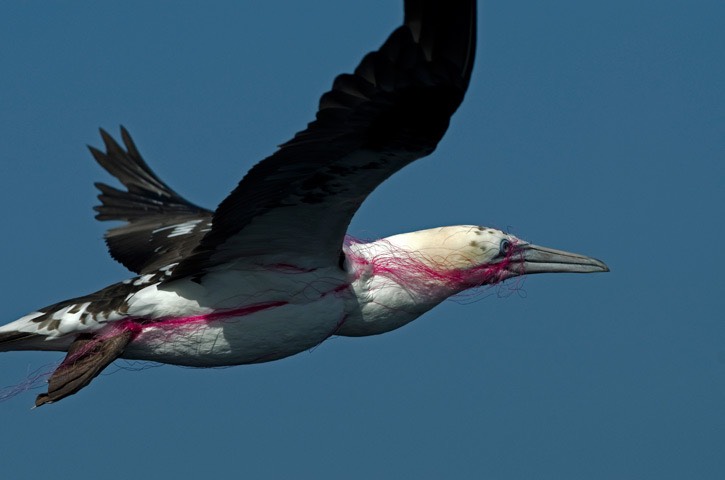
We also saw a few oiled gannets, one of which came in to recuperate on our deck for a day and night.
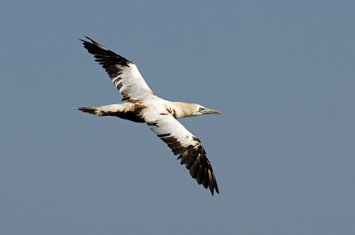

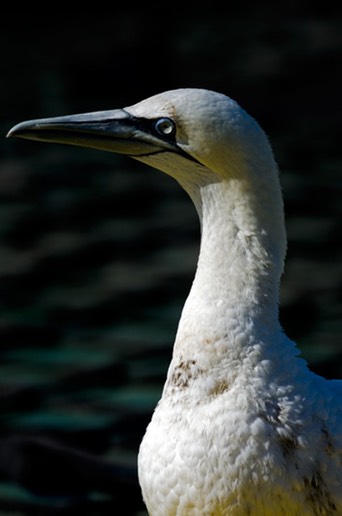
Our first trip coincided with the peak of the autumn bird migration. We saw migrant birds on every day, but overcast skies and offshore winds brought especially large numbers on some days.
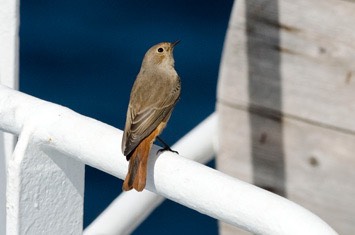
 Common redstart Nightingale
Common redstart Nightingale
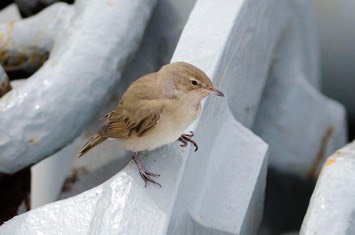
 Garden warbler Spotted flycatcher
Garden warbler Spotted flycatcher

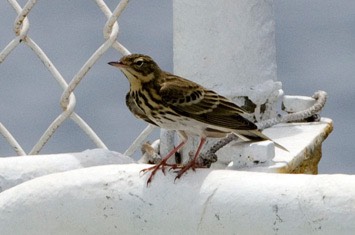 Willow warbler Tree pipit
Willow warbler Tree pipit

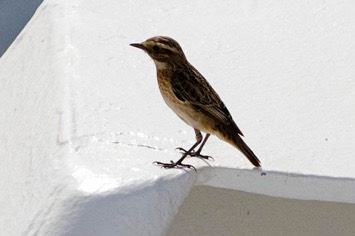 Reed warbler Whinchat
Reed warbler Whinchat
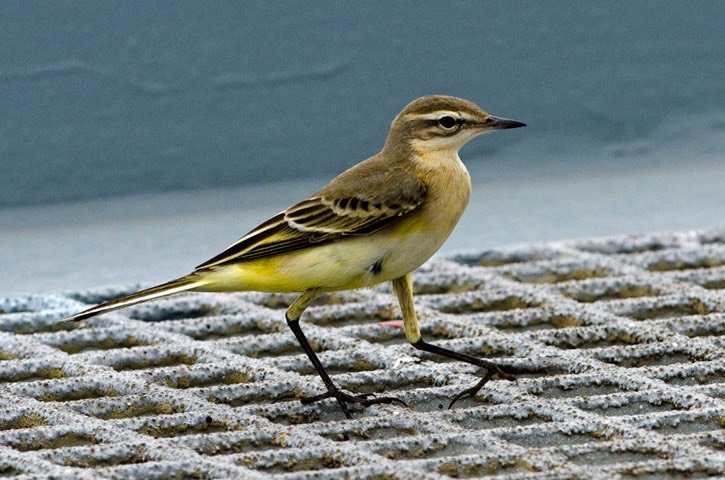 Yellow wagtail
Yellow wagtail

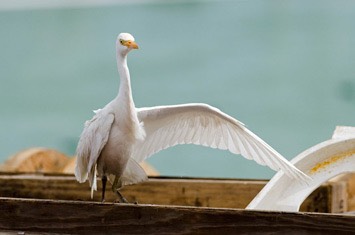 White wagtail Cattle egret
White wagtail Cattle egret

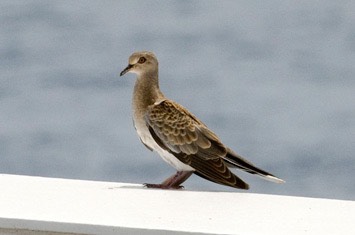 Namaqua dove Turtle dove
Namaqua dove Turtle dove
We also saw some spectacular large migrant birds. An osprey landing on the ship was certainly a big surprise and a kestrel put in a brief visit, too. Neither stayed long, unlike the short-eared owl that found a place to roost and made our ship its home for over a week.
